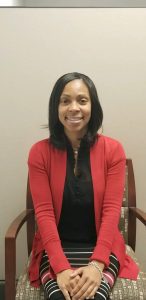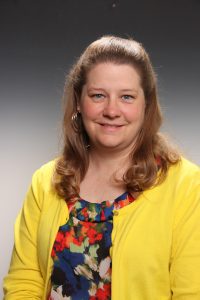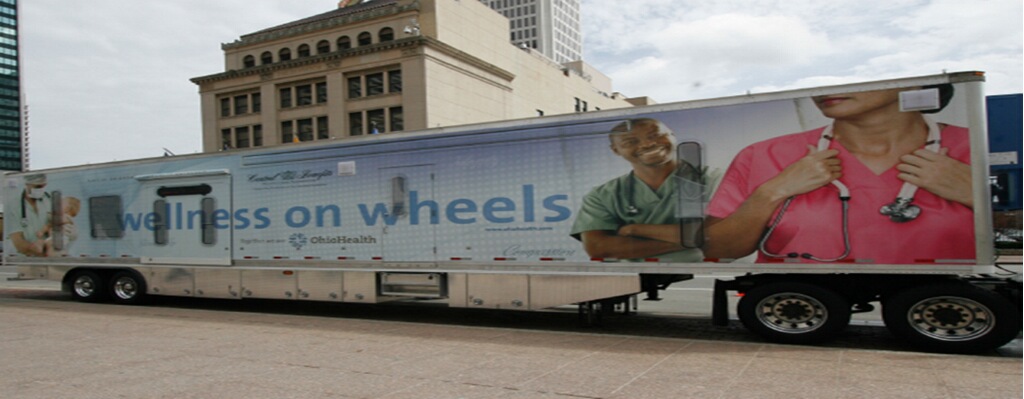
Five years ago, I transitioned into a leadership role as manager of the advanced practice providers (APPs) at OhioHealth, a major healthcare system in Central Ohio. In this position, I have influence on roles and responsibilities, and opportunities for innovative care for all APPs, which, at my organization, includes all types of advanced practice registered nurses—nurse practitioners (NPs), clinical nurse specialists, nurse-midwives, and nurse anesthetists—and physician assistants (PAs). At the same time, because I am passionate about direct patient care, I wanted to continue my journey as a women’s health nurse practitioner (WHNP) at OhioHealth. Therefore, I joined a community outreach initiative and began providing direct patient care on a mobile OB/GYN unit. Continuing practice helps keep me clinically relevant and fulfills my ongoing commitment to work as a WHNP.
The concept of mobile health is not new, but the addition of a WHNP to the team was new to OhioHealth. In this setting, I provide women’s healthcare services primarily to patients who come from economically disadvantaged backgrounds. I typically see patients for initial and return obstetrics visits, postpartum visits, annual checkups, vaginitis management, and family planning consults including procedures—similar to what is encountered in a traditional OB/GYN private practice, hospital-based clinic, or community health center. Visits are even scheduled in a traditional fashion, with 15- and 30-minute appointment slots, all within a 4-hour shift block. I care for pregnant patients at all gestational ages, which I enjoy because it requires me to keep up with the most recent evidence-based guidelines regarding prenatal care.
Our mobile health program is committed to eliminating barriers to access to care. We accept patients with late entry to prenatal care, patients who wish to transfer their prenatal care, and patients who may have been discharged from other practices. Many patients seen in our program decide to give birth at our affiliate hospital, but they have the option to give birth at any hospital within our healthcare system. We have processes in place to coordinate for needed antenatal testing, maternal–fetal medicine consultations, and labor management.
A few target areas for our program include offering high-quality, accessible prenatal care; providing interventions with 17-hydroxyprogesterone for women with a prior history of preterm delivery; increasing awareness about the benefits of long-acting reversible contraceptives (LARC) as well as placement of LARC; and increasing our rates for postpartum visits. Our program is unique in its use of registered nurses (RNs) as support staff for our healthcare providers (HCPs). The patient education and follow-through coordinated by our RNs, all of whom have strong backgrounds in women’s health, are additional advantages.
The state of Ohio is experiencing a crisis in terms of its rate of infant mortality, defined as the death of a live-born infant before his or her first birthday. The national infant mortality rate in 2016 was 5.87 deaths per 1,000 live-born infants.1 In Ohio, for white infants, this rate, also based on 2016 data, was 5.8 deaths per 1,000 live-born infants.2 By contrast, this rate for black infants born in Ohio—15.2 deaths per 1,000 live-born infants—was more than 2.5 times higher than that for white infants.2 Likewise, the mortality rate for black infants born in Columbus, Ohio, the location of our mobile unit, is 2.5 times higher than that for their white counterparts.3 To reduce this disparity, we educate all of our patients about best practices with respect to the benefits of breastfeeding, safe sleeping positions for infants, the necessity for smoking cessation (if applicable), and the importance of birth spacing.
Our interdisciplinary team includes physicians, a WHNP, RNs, a social worker, support staff, and our mobile unit driver. I am proud to be the first—and for now the only WHNP on the team. As an African-American woman, I am honored to add racial diversity to our HCP profile in this community-based program. Many of our patients are from ethnic minority groups who, according to their comments about our practice, appreciate seeing an HCP who looks like them. I believe that our program has developed a special niche in relating to our patients, while also providing high-quality care that is patient centered and team based. As a plus, we provide extensive education to all our patients. The added value of having our social worker assess and help address challenges in the areas of housing, employment, food poverty, and mental health disparities is unprecedented in mobile healthcare.
I have precepted WHNP, nurse-midwifery, family NP, and PA students on the mobile OB/GYN unit. Working with our diverse patient population provides these students with a unique learning opportunity that raises their awareness of the various types of settings in which high-quality women’s healthcare can be provided. Our mobile unit goes where our patients are, with established sites that help overcome transportation barriers to receive healthcare services. My own mobile unit location is at a local high school, although many of my patients are not students but, rather, patients for whom this location is convenient to their home or workplace. The mobile unit’s other established sites are, for the most part, local schools, although it also services a local homeless shelter.
Many visitors to the mobile unit are surprised to learn of the comprehensive care that we provide to patients. This unit has two exam rooms, one of which is equipped with an ultrasound machine; two restrooms; a waiting area; and private space for registration and consultation with the social worker. Patients can enjoy soft music playing in the background as they wait to see an HCP. Although the unit may be a nontraditional place to deliver women’s healthcare, patients are afforded the same amenities on our mobile unit as they would in a traditional brick and mortar office. This model of care is innovative and meets the needs of many patients in central Ohio.
In Ohio, as well as around the nation, the manner in which healthcare is delivered should continuously be examined to ensure that patients’ evolving needs are being met. At the same time, healthcare programs such as ours must adapt to financial and regulatory changes. At our mobile unit, women who receive healthcare services are insurance billed, but we also utilize the expertise of our social worker to explore coverage for those who are uninsured or unable to pay. We are not a free clinic, which is sometimes surprising for others to learn.
A lot has changed in healthcare since I graduated from my initial WHNP program in 2006 from The Ohio State University. When I first began practice, if my patient was pregnant, the problem list typically included pregnancy, with maybe one or two co-morbid conditions that, in many cases, were well controlled in collaboration with a primary care provider. Today, my patients are presenting with increasing co-morbid conditions and higher acuity needs that require me to continue to stay up to date on not just gynecology or obstetrics guidelines but also guidelines in primary care, which is within the scope of practice and training for WHNPs. Although the work is increasingly challenging, I know that with clinical exposure comes clinical learning.
In 2013, I earned my doctor of nursing practice (DNP) degree from The Ohio State University (yes, I love Ohio State!). My final project focused on the timing of screening for gestational diabetes (GDM) in pregnant women aged 18 years or older. This topic was important to me because of the seemingly rising rates of GDM that I was seeing in my current patient population. What I discovered back in 2012-2013 is still relevant today, which is that many patients have identifiable risk factors that indicate the need for early screening for diabetes in pregnancy. On the mobile unit, we screen our obstetric patients at the first prenatal visit who present with risk factors such as obesity, history of GDM, and, if of an ethnic minority such as African American or Hispanic, for pre-gestational diabetes. Early screening for diabetes in pregnancy is supported by both the American College of Obstetricians and Gynecologists (ACOG) and the American Diabetes Association (ADA).4,5 I am fortunate to be employed and provide care in an environment that supports evidence-based clinical practice.
Based on my observations, the field of women’s healthcare is incorporating more and more primary care services. I encourage HCPs and students providing care to women to take advantage of learning opportunities in primary care, through clinical experience, formal academic programs, or continuing education programs. The knowledge and skills gained will surely be utilized if one continues to provide direct patient care or work in an academic setting.
When I practice on the mobile unit, I appreciate the collaborative relationship that exists between WHNPs and physicians. No physician is present onsite, so I am clinically responsible for the unit during my scheduled time. In Ohio, a standard care arrangement must be in place between an NP and a physician in order for the NP—or, in my case, the WHNP—to practice. According to this arrangement, the physician need not be physically present on site. But that’s okay, because my collaborating physicians are always available to me by phone. And, with the use of an electronic health record, they can quickly log into the system and look at my notes to provide consultative advice when the complexity of the case warrants it. This model of practice exemplifies WHNPs practicing to the fullest extent of their education and training, as recommended by the Institute of Medicine.6 My medical director often talks about APPs being the wave of the future because we are helping meet the need for more HCPs in ways that are of added value and at reduced cost. As a WHNP who works as manager of APPs for OhioHealth Physician Group, I couldn’t agree more!
The variety of roles that WHNPs can assume extends beyond traditional OB/GYN care. In my APP manager role, I reflect on my own clinical experiences and skills obtained from my academic program and clinical practice to examine opportunities for improvement with the APPs. As I examine educational competencies, opportunities for professional development, mentoring, and the need for robust orientation and on-boarding programs, I realize that my own foundation for basic understanding was built from my own initial WHNP education. I plan to utilize the skills learned to continue my journey in the administrative realm, as well as maintain my relationships with several local universities through guest lectures and participation in clinical skills labs. I definitely intend to maintain my clinical practice.
Randee L. Masciola

I often see patients who tell me that a friend referred them to me, which is one of the greatest compliments an HCP can receive. I am honored that women trust me as their HCP and I am humbled by the opportunity to improve the health of those I serve.
Angela D. Alston is Executive Director of Faculty Practice and Entrepreneurship, ChiefDiversity Officer, and Assistant Professor of Clinical Practice at The Ohio State University College of Nursing in Columbus. Randee L. Masciola is an Assistant Professor at The Ohio State University, College of Nursing in Columbus and an actively practicing women’s health nurse practitioner.
References
- National Center for Health Statistics. Deaths and Mortality. May 3, 2017. cdc.gov/nchs/fastats/deaths.htm
- Franklin County Public Health. Infant Mortality.org/health-wellness-maternal-and-child-health/infant-mortality/
- The City of Columbus. Columbus Public Health. Infant Mortality Overview. 2019. gov/publichealth/programs/infant-mortality-overview/
- American College of Obstetricians and Gynecologists. ACOG Practice Bulletin: Gestational Diabetes. Number 180. Obstet Gynecol. 2017;130(1):e17-e37. lww.com/greenjournal/FullText/2017/07000/Practice_Bulletin_No__180__Gestational_Diabetes.51.aspx
- American Diabetes Association. With Diabetes, Action Is the Best Medicine. org/are-you-at-risk/prediabetes/?loc=atrisk-slabnav
- Institute of Medicine. The Future of Nursing: Leading Change, Advancing Health. Washington, DC: The National Academies Press; 2011.

